It supposed to be a complicated system, and line following worth a good science publication. So here's a very simplified answer.
When you think about algorithm it's important to understand, that it is always trade. You can get camera with small FPS and poor resolution, but then you can follow smoother lines with big turn radiuses.
Or if you need to follow some crazy curve with sharp turns, you should get good camera or may be few cameras.
First of all let's assume following conditions:
- You need solution with single camera or line sensor.
- Line is of a dark colour and background is light coloured.
- Robot speed as 25mph.
- We also have two parameters:
- thickness - we want to maximize thickness variation.
- turn radius - we want to minimize turn radius.
There we go.
On top level your system looks like block with negative feedback.
In your case:
- feedback is a line declination from the center... and robot velocity.
- output signals are steering and desired robot velocity. I assume better to slowdown robot then to fail and loose the line.
Usually in order to achieve smooth reaction you should use PID controllers and sometimes (in space industry) Bellman equations.
Robot
Schematically your robot might be like this:

- It accepts line declination.
- It calculates desired steering via Steering PID
- It might happen, that you should reduce velocity, this is why you might need smth like Max velocity calculator
- Then knowing max velocity and current velocity, you calculate velocity error and send it to Thrust PID.
- Thrust PID on output forms positive or negative signal which tells your motors (or rather hardware motor controller) to accelerate or break respectively.
- Also steering signal goes to steering servos.
Now having this schema at hands we can talk a little bit about algorithm.
As it was said fast camera will allow you to follow sharper turns.
BUT turn radius also depends on other physical properties of your robot: mass, wheel tires.
Camera sensor
If my understanding of your robot is correct, then camera sensor is just a few filters:
Thresholding. It might be Otsu thresholding or may be even Adaptive thresholding. Both methods allow to work in different light conditions.
Find center of line with moments filter. As long as line is black, you should invert frame. It might be achieved by passing THRES_BINARY_INV instead of THRES_BINARY on previous step.
Pick x coordinate of momentum center, and compare it with frame mid line:
declination = x - frame_width/2
That's it.
This set of filters uses very efficient convolution algorithms and should work with minimal delay even on oldest RPi versions.
If you need to improve FPS, you can crop your frame from top and bottom.
Very sharp turns
This solution might deal with even right-angled turns like this:
------
|
|
^
<robot>
All you need is to adjust Steering PID parameters.
But it might not work well with U turns where camera captured both directions:
--
| |
| |
^
<robot>
In this case you should reduce camera's angle of view.
Further improvements
In fact the recent case, when your camera can see whole U-turn might be an advantage. Actually the more curves you can recognize the better you can plan robot movements. But it requires more robust and expensive algorithms.
Also you can embed simple LSTM model to recognize some dangerous cases.
